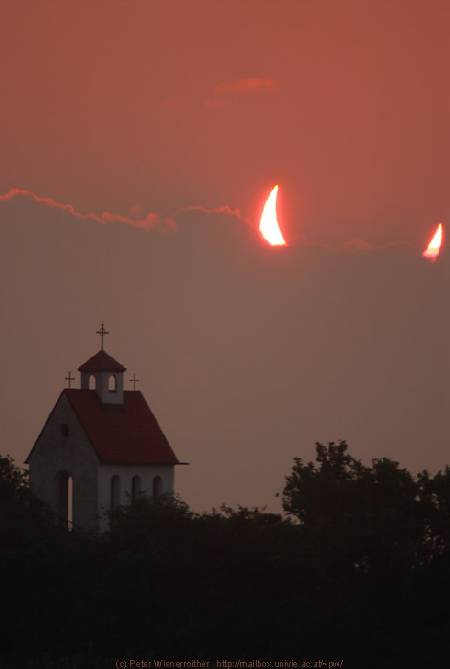Credit & Copyright: Peter Wienerroither
Explanation:
High above a small church near Vienna,
Austria, clouds and the Moon vied for
position in front of the Sun.
Such was the case on the ground late
last month during a
partial eclipse of the Sun
visible throughout
Europe and
Asia.
Nearing the farthest part of its
orbit around the Earth, the
Moon's angular size was too small to
block the entire Sun, a situation that would have resulted in a
total solar eclipse.
The next solar eclipse visible from Earth will occur on
November 23.
Although a total eclipse will be visible only from parts of
Antarctica,
parts of the Sun will momentarily disappear for observers across
Australia,
New Zealand, and the southernmost tip of
South America.
1999 2000 2001 2002 2003 2004 2005 2006 2007 2008 2009 2010 2011 2012 2013 2014 2015 2016 2017 2018 2019 2020 2021 2022 2023 2024 2025 |
Yanvar' Fevral' Mart Aprel' Mai Iyun' Iyul' Avgust Sentyabr' Oktyabr' Noyabr' Dekabr' |
NASA Web Site Statements, Warnings, and Disclaimers
NASA Official: Jay Norris. Specific rights apply.
A service of: LHEA at NASA / GSFC
& Michigan Tech. U.
|
Publikacii s klyuchevymi slovami:
partial solar eclipse - chastnoe solnechnoe zatmenie
Publikacii so slovami: partial solar eclipse - chastnoe solnechnoe zatmenie | |
Sm. takzhe:
Vse publikacii na tu zhe temu >> | |
